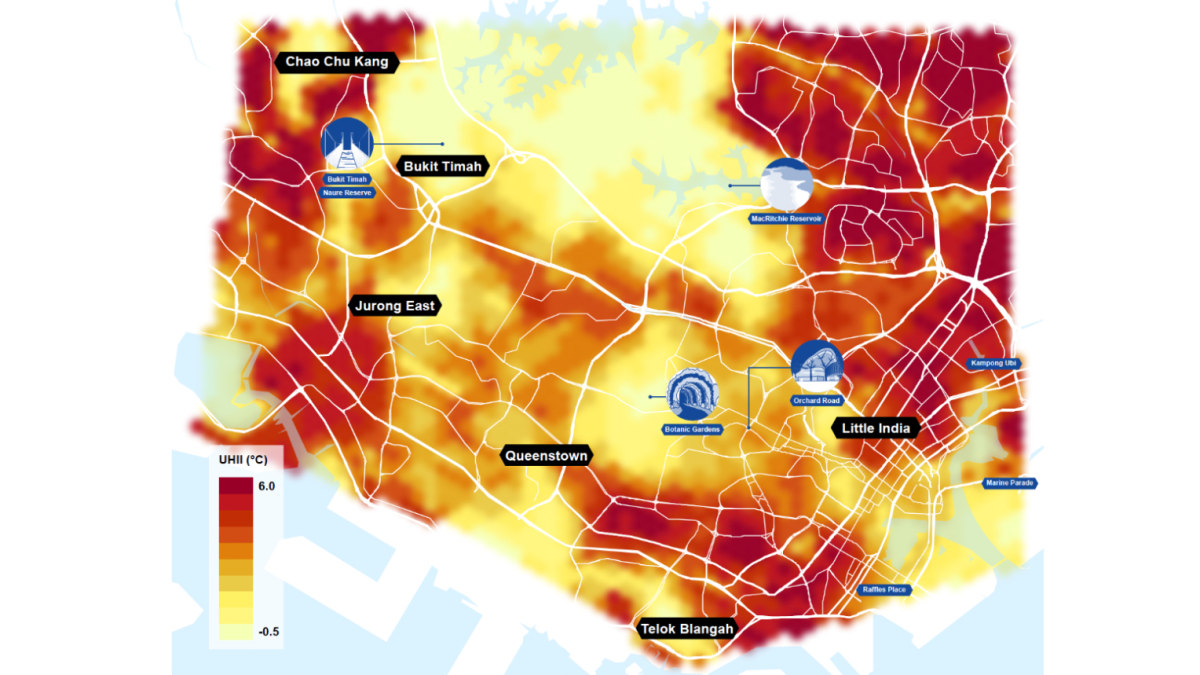 Photo from Arup
Photo from Arup
Urban Heat Island effect? Low-rise streets emerge as one of the hottest locations in Singapore
Experts suggest that Singapore needs to do more than add greenery to design for heat.
Low-rise streets like Telok Ayer and Amoy Street are one of Singapore’s hottest spots, which is surprising given that these streets have low-rise development, green spaces and proximity to Marina Bay.
According to Arup, a global sustainable development consultancy, Telok Ayer and Raffles Place have 0% water and 6% vegetation absorbing heat.
Arup said crucial elements are intensifying heat in areas such as Telok Ayer.
“The once coastal roads are surrounded by high-rise urban developments that block the cooling effect from the nearby coast,” Arup commented.
“The adjoining shophouses on the streets also have dark terracotta roofs that reach very high temperatures due to solar radiation. This heat gets transferred to the air around the buildings, which is more impactful for low-rise areas close to pedestrian height,” Arup added.
Meanwhile, industrial zones like Kampong Ubi, areas with high population density in Rochor and Marine Parade, and areas within Orchard and Sembawang are also experiencing a temperature difference of above 5°C compared to their rural surroundings.
The coolest spot within Singapore’s 150km snapshot was Upper Peirce Reservoir Park, with 88% water and 12% vegetation absorbing heat, making the area 6.5°C cooler than the most severe urban heat island (UHI) hot spots.
Tony Chan, associate principal of Cities and Planning at Arup, said designers and decision-makers should not be complacent about the urban heat island effect.
“We have a lot of greenery throughout the city that mitigates the effects of urban heat islands. However, there’s still more to do when designing for heat. We all tend to retreat to air-conditioned environments when temperatures rise. From a sustainability perspective, this is far from ideal, given the reliance on energy and the inequality of this approach since not all citizens have the luxury of working indoors. It’s important that we consider more sustainable strategies for mitigating heat, such as incorporating the natural environment into our design”, Chan said.
Arup recommended essential urban design solutions to cool cities, including increasing tree canopy cover, creating more permeable surfaces, and using every space like white or reflective roofs to passively cool the buildings and reduce the need for air conditioning.
























 Advertise
Advertise






